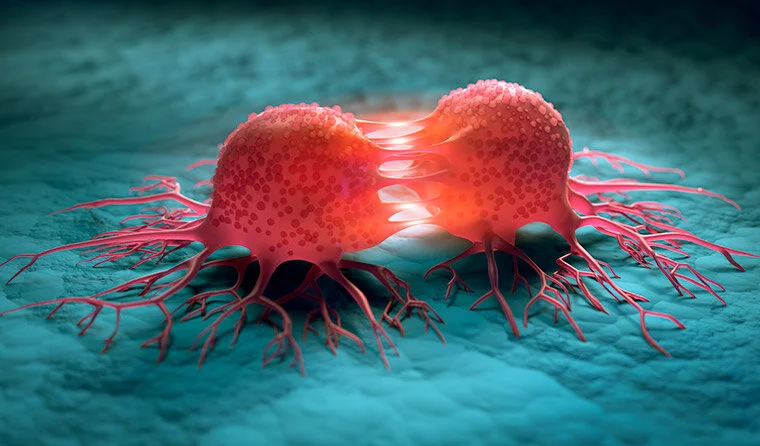PDT for Cancer
Photodynamic therapy (PDT) is extensively used to treat some types of skin cancers, inflammatory conditions and infections. The principle of PDT is to promote absorption of specific chemicals (photosensitizers) into target cells such as cancer cells or infectious agents. Light of specific wavelengths are then used to activate the photosensitizer to kill the cells which have absorbed it. The advantage of PDT is that it acts like a “silver bullet”: it demolishes its target but has very little impact on the surrounding normal cells so its very well tolerated with little or no side effects.
PDT is a very effective and well tolerated treatment but until recently its application was limited to superficial areas that could be accessed with the light therapy: skin, oral cavity, esophagus, lungs, eyes etc.
With the advent of intravascular, sub-lingual and most recently, interstitial laser therapy, a whole new world of possibilities has now been ushered in. Deeply lying cancers, infections and other conditions can now be treated because the activating light can now be delivered systemically or even directly into tissues (interstitial PDT).
PDT for Internal CancerS
In the context of cancer treatments, PDT can be used alone or in conjunction with traditional chemotherapy which can then be given at lower, less toxic doses. A huge advantage of PDT is that there is a very low risk of cancer cells mutating and becoming resistant to PDT in contrast to standard chemotherapy.
Many naturally derived photosensitisers have been introduced and a lot of development is taking place in this area that are expanding the scope of these treatments. Cucurmin is one of many photosensitizers that are used in this way. It has well recognized anti-cancer, anti-microbial, anti-inflammatory and anti-oxidant properties in its own right, but when used as a PDT agent it is far more powerful:
Indocyanine Green PDT
Indocyanine green (ICG) is a promising agent for cancer PDT. This is a third generation photosensitizer which has been used to treat a number of cancers including breast, colon and prostate cancer with impressive response. European centers are reporting significant reduction in the size of breast cancer based on scan results even over the course of a week of treatments. And in stark contrast to standard chemotherapeutic agents, the treatments are are extremely well tolerated. Laser PDT cancer treatments can also be combined with much lower doses of standard cancer therapy in order to improve outcome and lessen side effects.
One of the most exciting recent developments is the introduction of nano-ICG which received European approval in late 2018. It shows greater uptake into cancer cells and remains at high therapeutic levels for 96 hours, allowing multiple treatment sessions from a single dose. These treatments are being administered very commonly in Europe but are not yet available in the Bahamas. Luminnova Health will provide updates as results are documented and more long term follow up becomes available.
Methylene Blue PDT For Pre-Cancers and Skin Cancer
Methylene blue has gained in popularity as a photosensitizer as it is effective, very well tolerated but far less costly than many other photosensitizers. Methylene blue has been proven safe over many decades and is even administered intravenously in infants for a condition called methemoglobinaemia. It has also been used over several months to treat malaria in adults and children with an excellent safety profile.
Due to the lower cost of methylene blue, this photosensitizer can be applied over large areas of the skin to target pre-cancers and some superficial skin cancers. In this way, the heavily sun exposed areas, such as the scalp, face and limbs can be pro-actively treated in order to reduce the risk of future skin cancer development. And as photodynamic therapy reduces photodamage, an additional benefit is also younger looking skin in the treated areas!!
Methylene blue is usually applied topically followed by optimized laser or LED light to treat pre-cancers and thin skin cancers. In some cases, the methylene blue is injected directly into the skin cancer prior to light activation. The following is an example of a squamous cell carcinoma which was treated using injectable methylene blue PDT. The response was observed after a single treatment repeated treatments may be needed in some cases:




